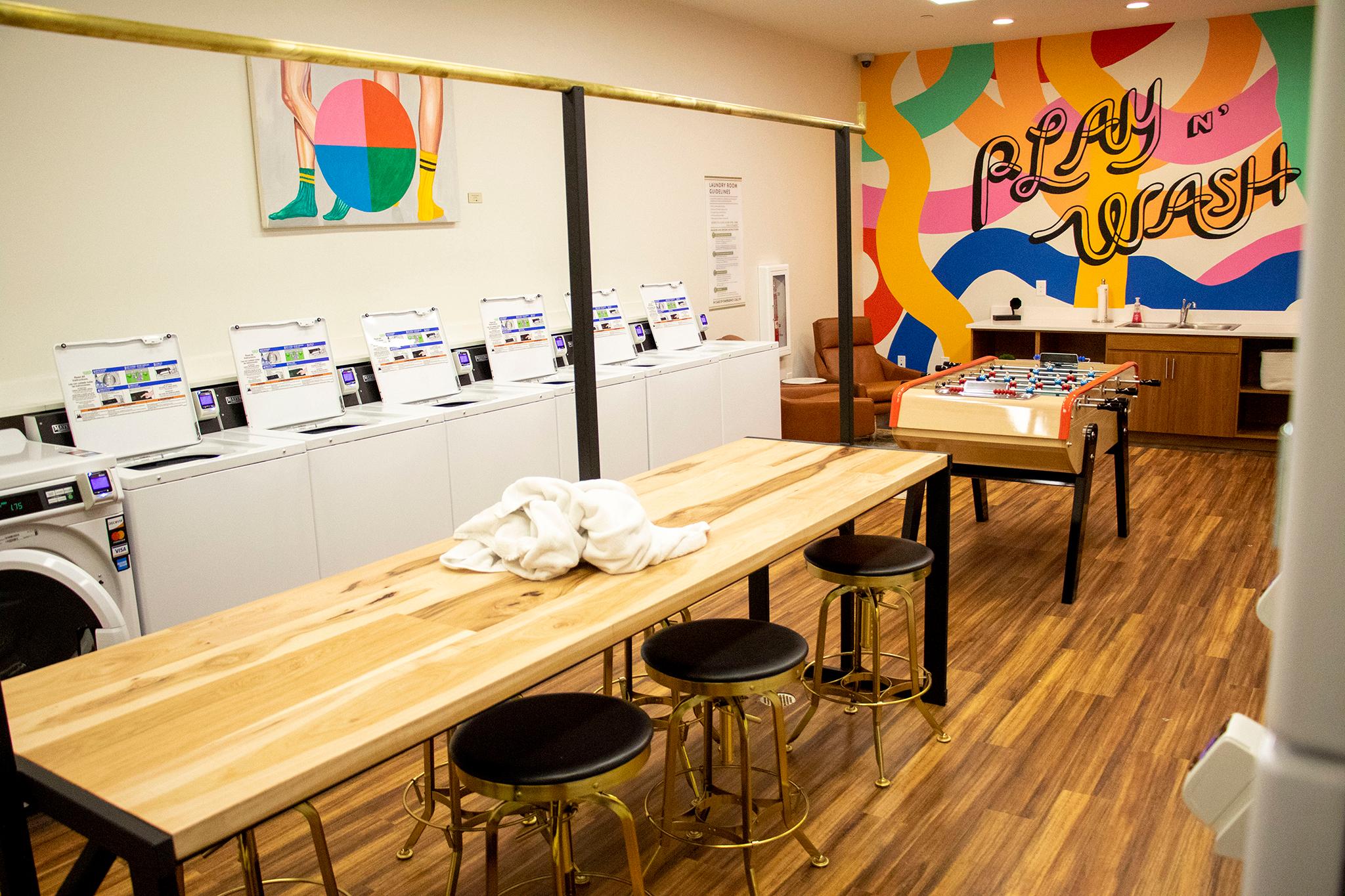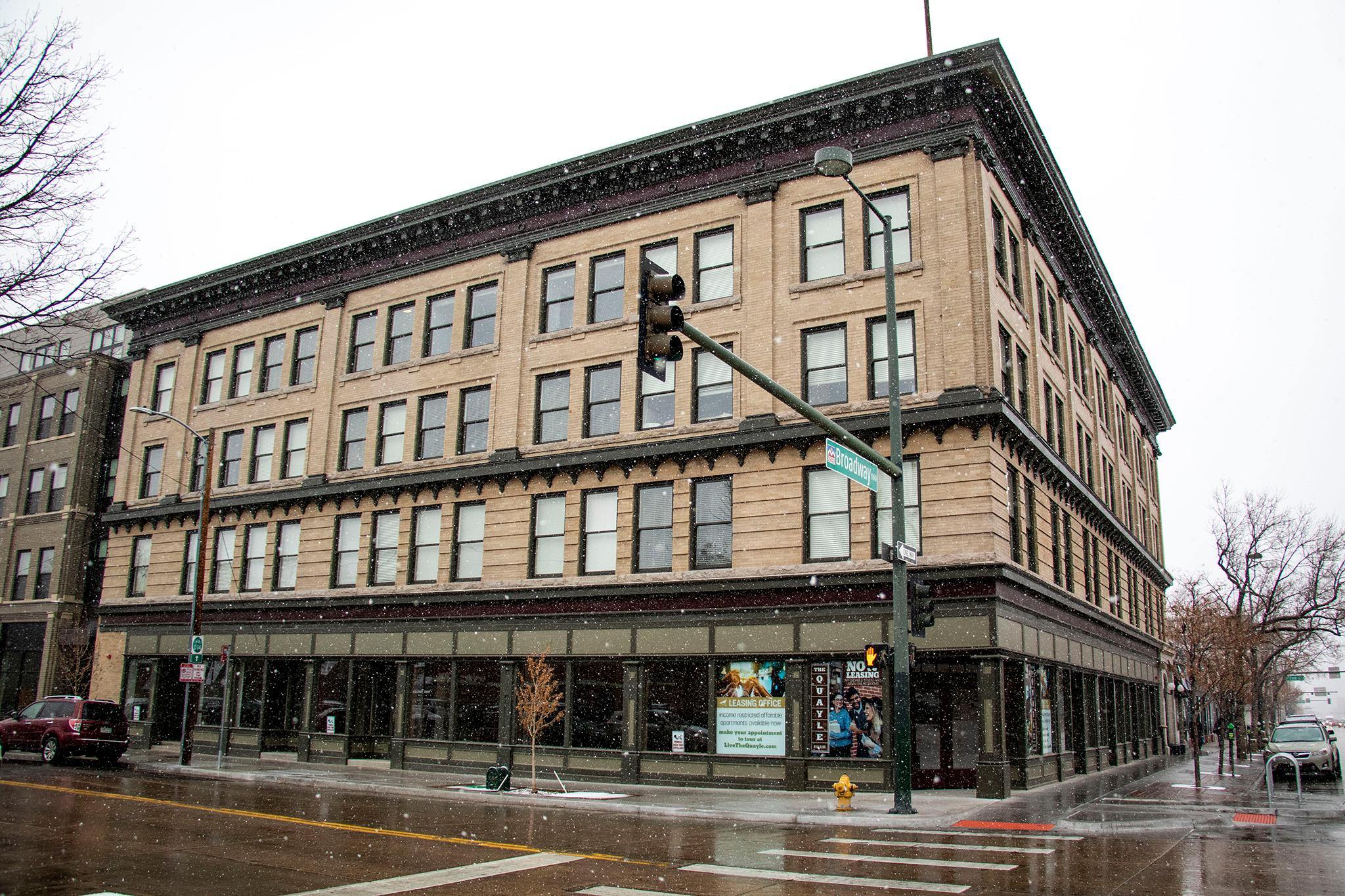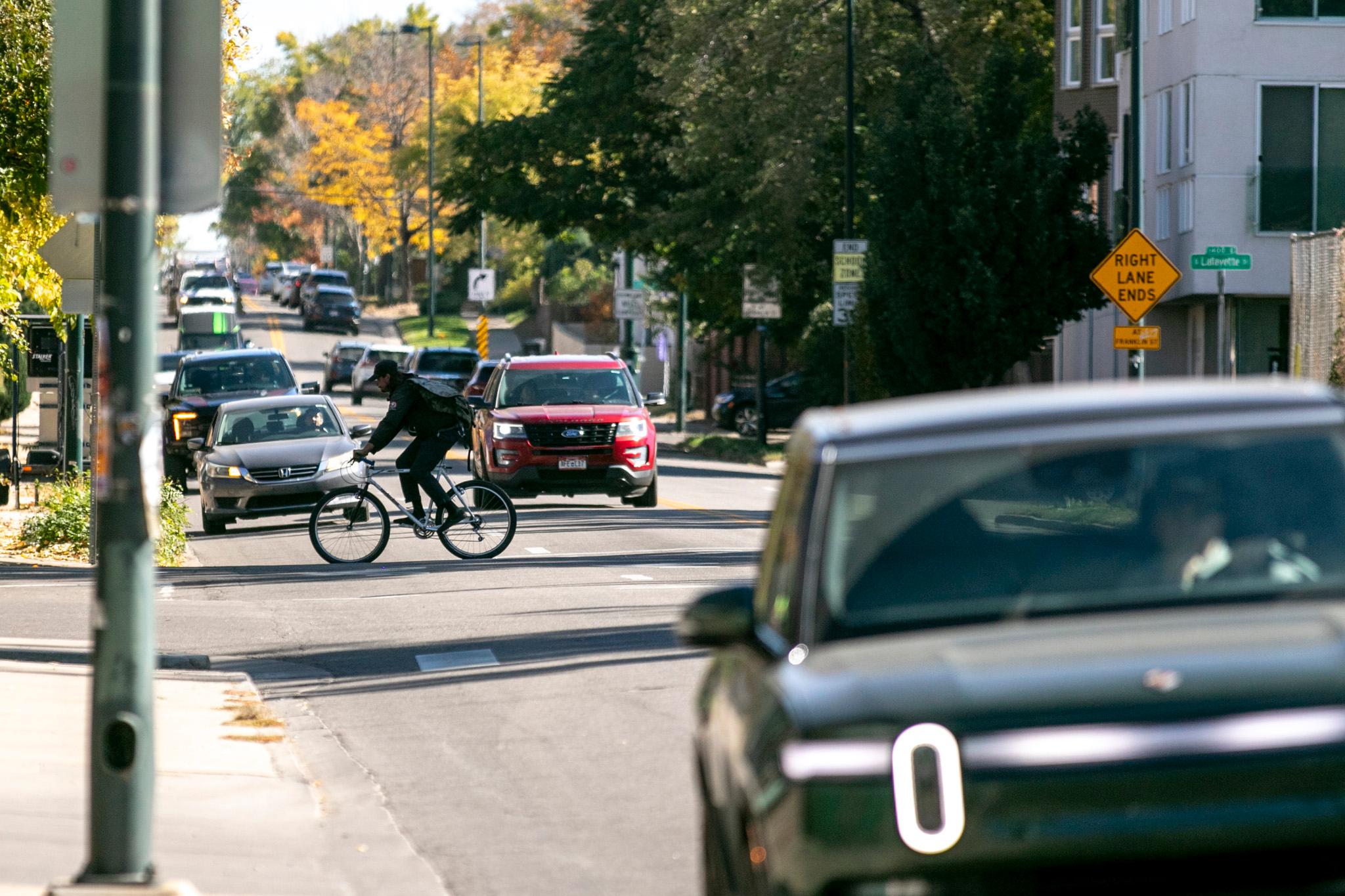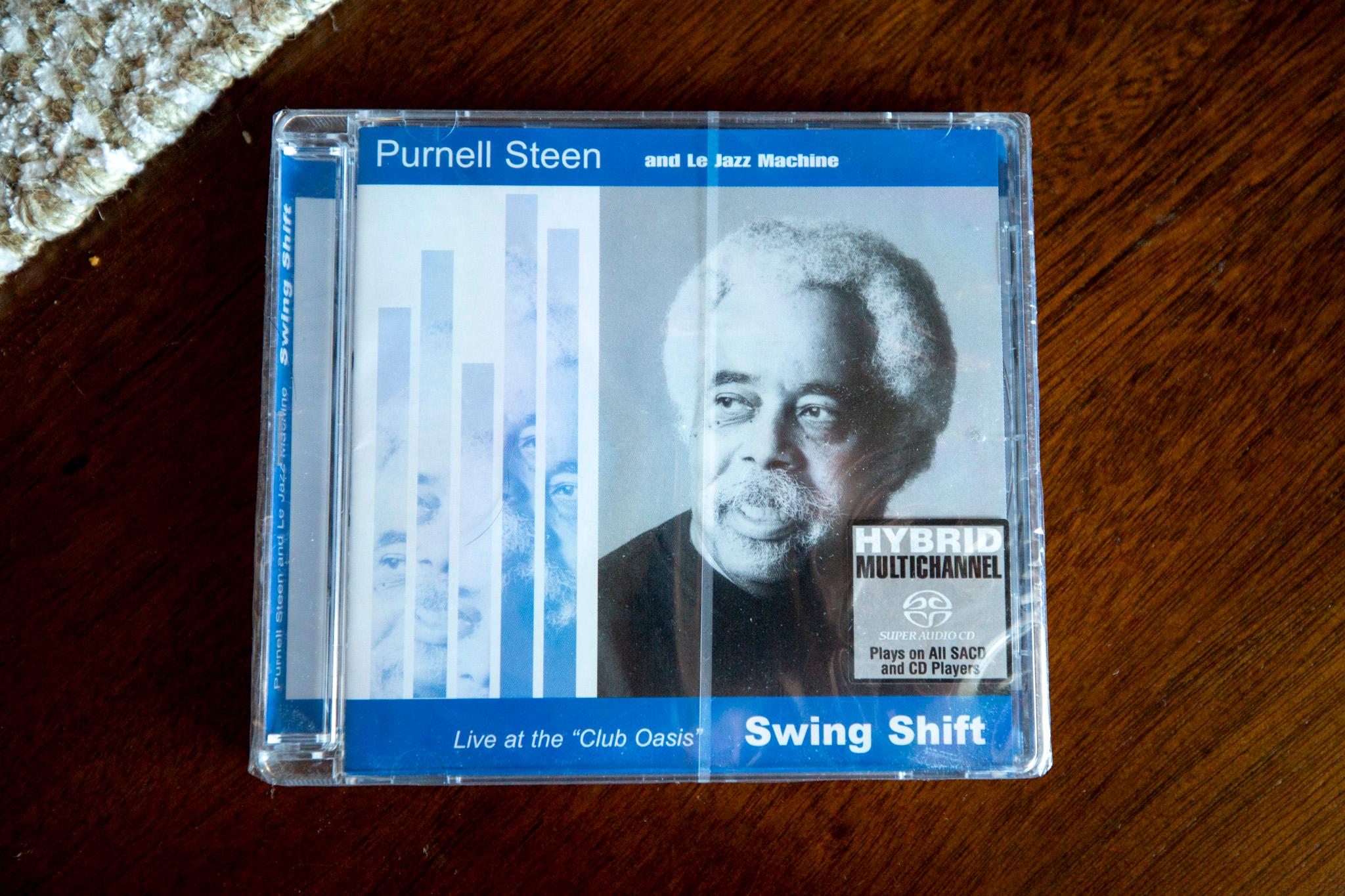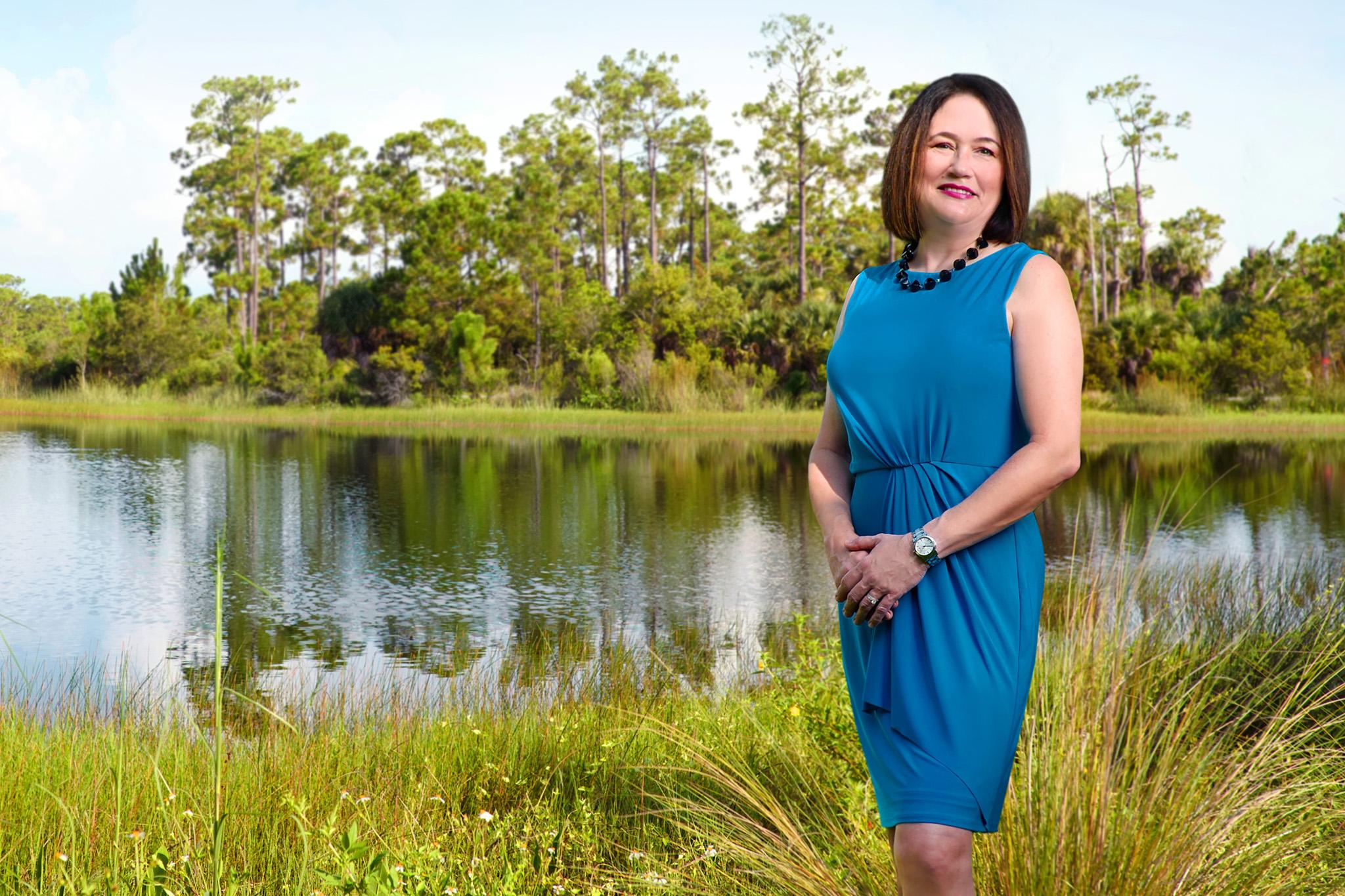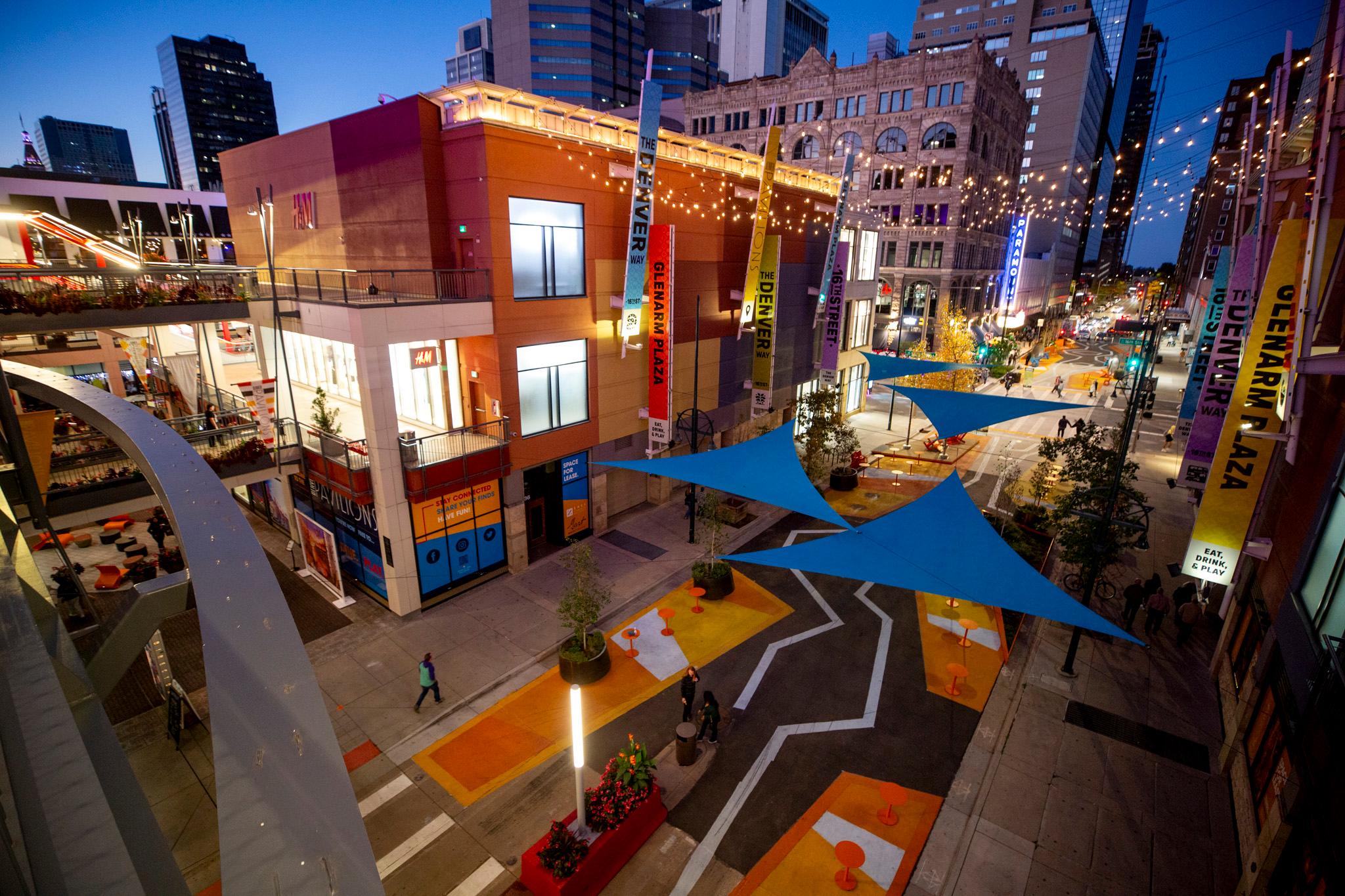A muralist has tried to take some of the dreariness out of washing clothes.
"I just remember being in laundry rooms and sitting there for hours and feeling like, 'This sucks,'" Olive Moya said in an interview in her Englewood home studio.
She's splashed her signature shapes she calls noodles on the laundry room walls at The Quayle, a new Baker apartment building that was created out of a 112-year-old hotel.
"It feels like someone cares," Moya said of The Quayle's art-filled community spaces. "I think that's what everybody wants with home."
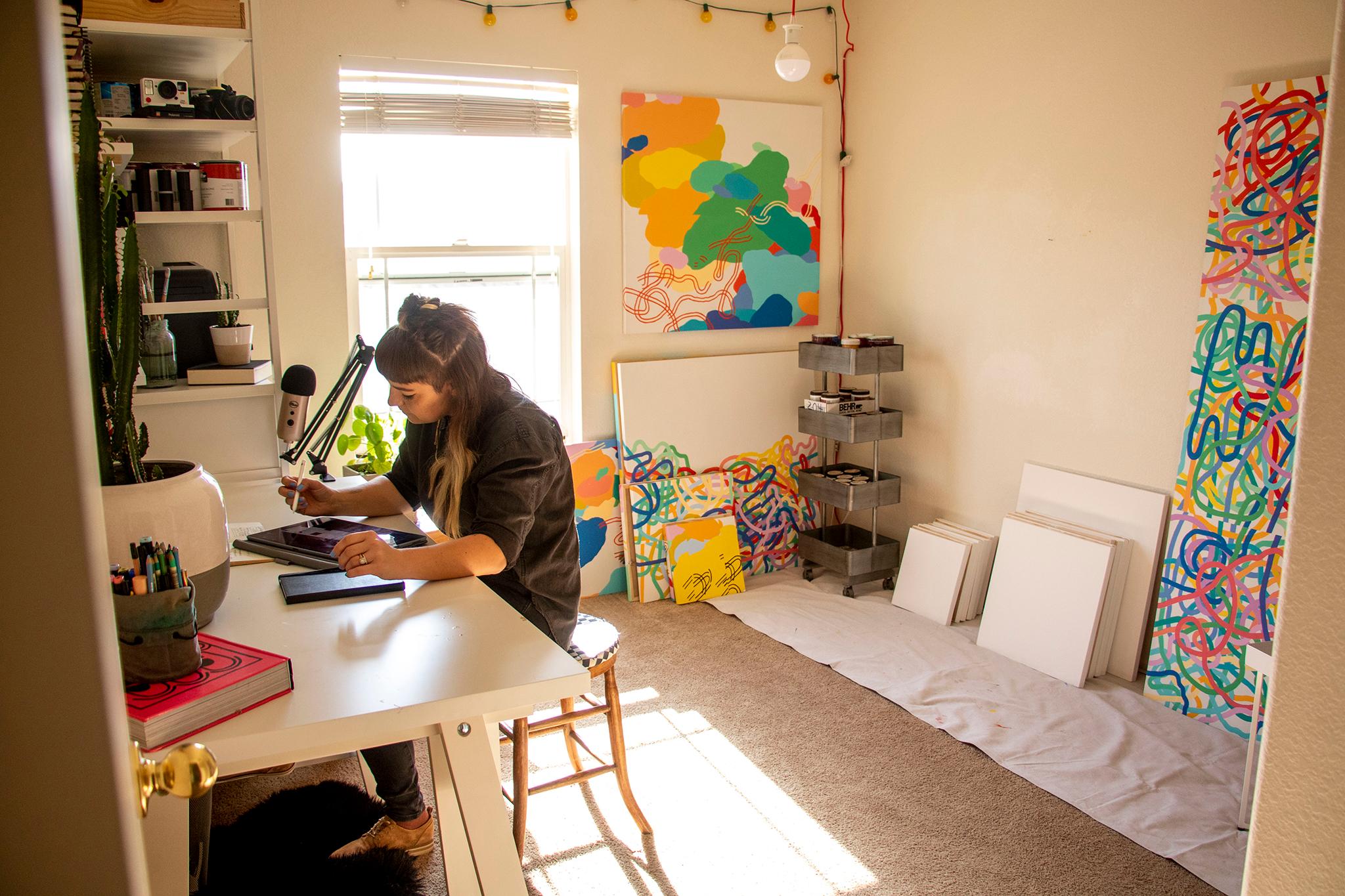
Moya's noodles also have been spotted along Cherry Creek Trail and she is preparing to start work on a commission for the Republic Plaza office tower downtown. Moya, daughter of an architect who built houses, is among 21 artists whose paintings, sculptures and photographs have helped create a sense of warmth and engagement throughout The Quayle.
"I would take those home," Moya said of sculptor Craig Robb's row of multicolored tiny houses -- though not as tiny as the Monopoly houses they evoke -- over the mailboxes in The Quayle's lobby.
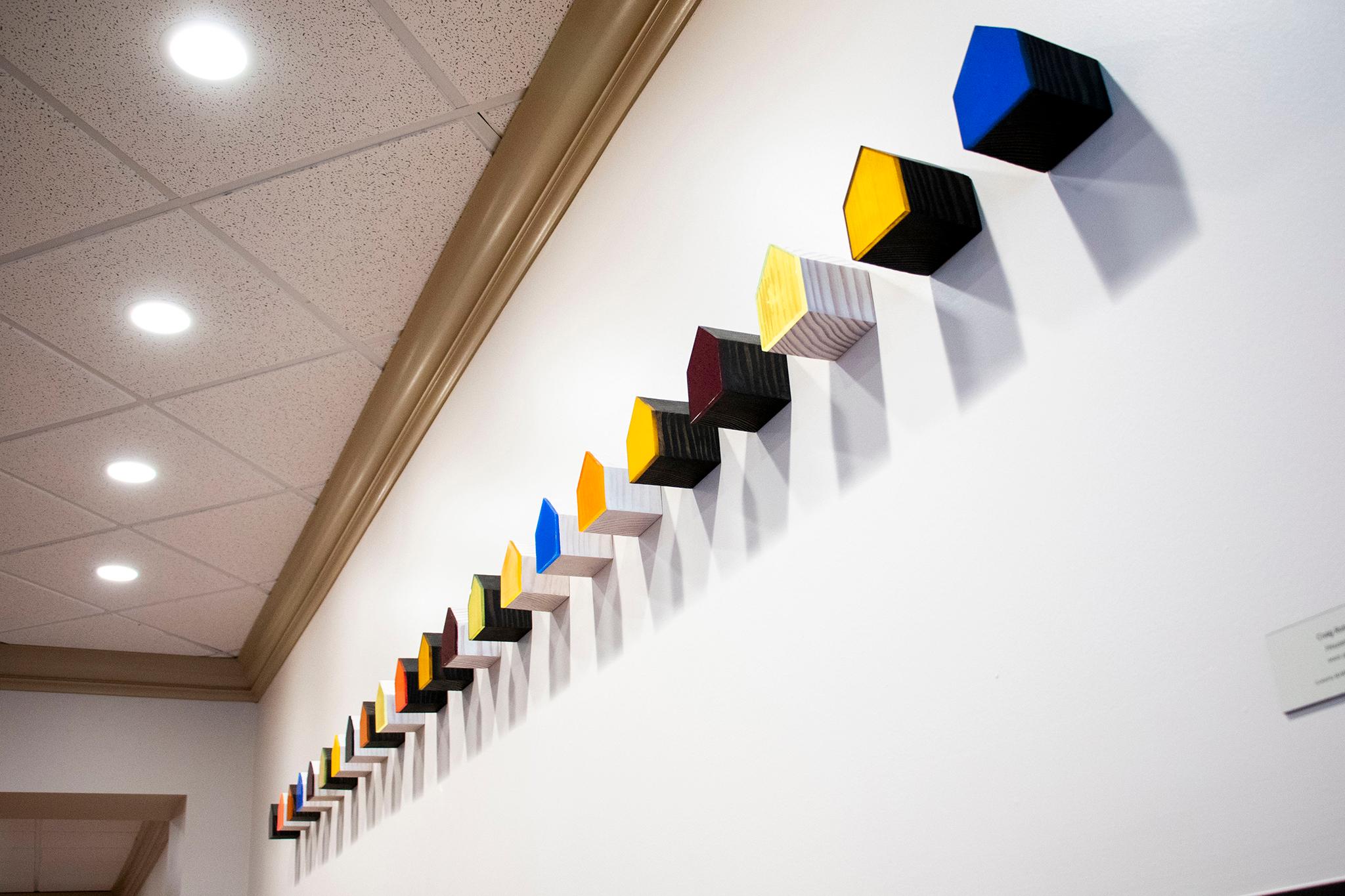
The Quayle's 102 studios and one-bedrooms are restricted to households earning 60 percent of Denver's area median income. Sixty percent AMI is $39,000 for a one-person household and $44,580 for a couple. Rent is considered affordable if it is a third or less of household income. The online real estate company Zumper calculated the median rent for a one-bedroom in Denver at $1,520 in November, which would take up 46 percent of the income of a single person earning 60 percent AMI and 40 percent of a couple at 60 percent AMI.
Subsidies and tax credits ensured affordability at The Quayle, developed by David Zucker. Zucker said the Denver Urban Renewal Authority, which kicked in subsidies for the renovations at 49 W. First Ave. in Baker, helped him focus on the power of art.
"The fact that DURA requires one percent of its funding committed to public art is a beneficial trigger for a developer to consider art's impact on the community and residents and tenants of the property," Zucker said.

"We want this to be a place that expresses humanity and makes people feel comfortable," Zucker said during a tour of The Quayle.
Zucker envisions The Quayle as home to people who staff nearby trendy restaurants and Denver Health's main hospital.
Multimedia artist Kaitlyn Tucek said she was "thrilled" to be part of an effort to support Denver's key workers.
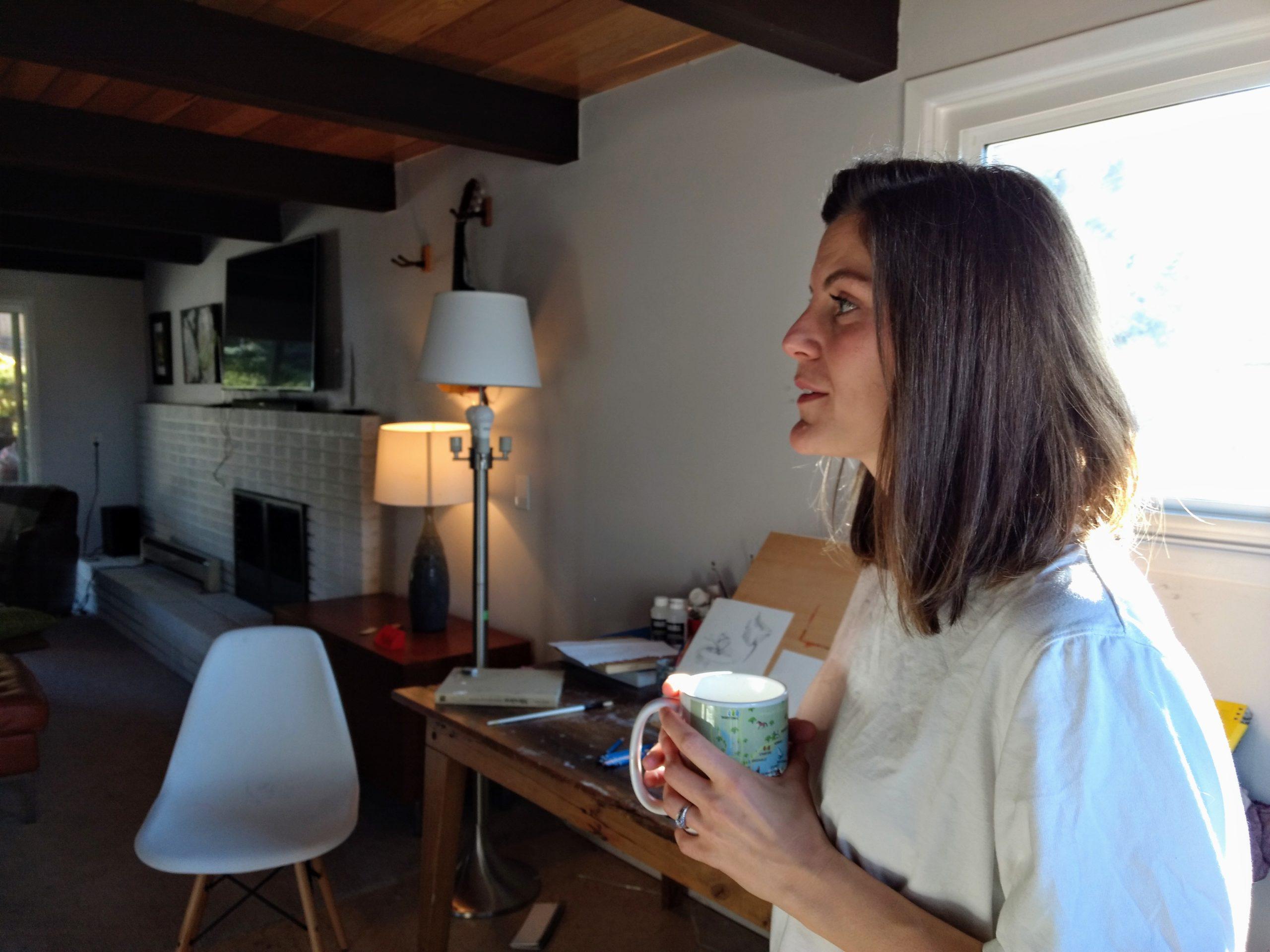
Tucek said she and her husband were burdened by student debt and had long commutes when they were living in Brooklyn and she was teaching as well as making art.
"We were stressed. We couldn't sit down to a proper meal," she said. "To be able to prep everything, sit down to a meal, is core to life. Those things are vital to quality of life: To be able to go home easily."
They came to Denver six years ago.
"We were pushed out of Brooklyn," she said in an interview in her Bear Valley home, where she also has her studio.
"One of the reasons we moved here is I didn't want to commute anymore."
As an artist, Tucek is preoccupied with connecting with viewers, especially those who think of art as intimidating. During a three-month 2018 residency at Longmont's Firehouse Art Center, Tucek wandered that town's street, asking strangers to give her objects that she included in an installation called "Won't You Make Believe With Me." At The Quayle, strangers will be living with her art, a collage of text and drawings called "Give My Regards."
Like "Won't You Make Believe With Me," Tucek's Quayle piece includes mundane, familiar objects such as what from a distance might appear to be handwritten letters.
"You want to go over and read it," Tucek said. "Like a secret."
The piece in a lobby off a side door of The Quayle includes tribute to leading architects who helped develop Denver.
"Many of us have transplanted ourselves in Denver, but have we spent the time learning about this new city we call home?" Tucek writes in an artist statement.

The yellow-brick hotel designed by Charles Quayle was built in 1907. It is ornate, though not as ornate as The Mayan Theater directly across Broadway. To create The Quayle, Zucker's Zocalo Community Development renovated the 1907 building and erected a new building to the rear that is connected to the historic structure.
Quayle's building, the First Avenue Hotel, was a single room occupancy hotel when it closed in the 1960s. Zucker's renovation included joining hotel rooms to create light-filled apartments. Details that were preserved include the tile floor in the lobby where Tucek's collage hangs.
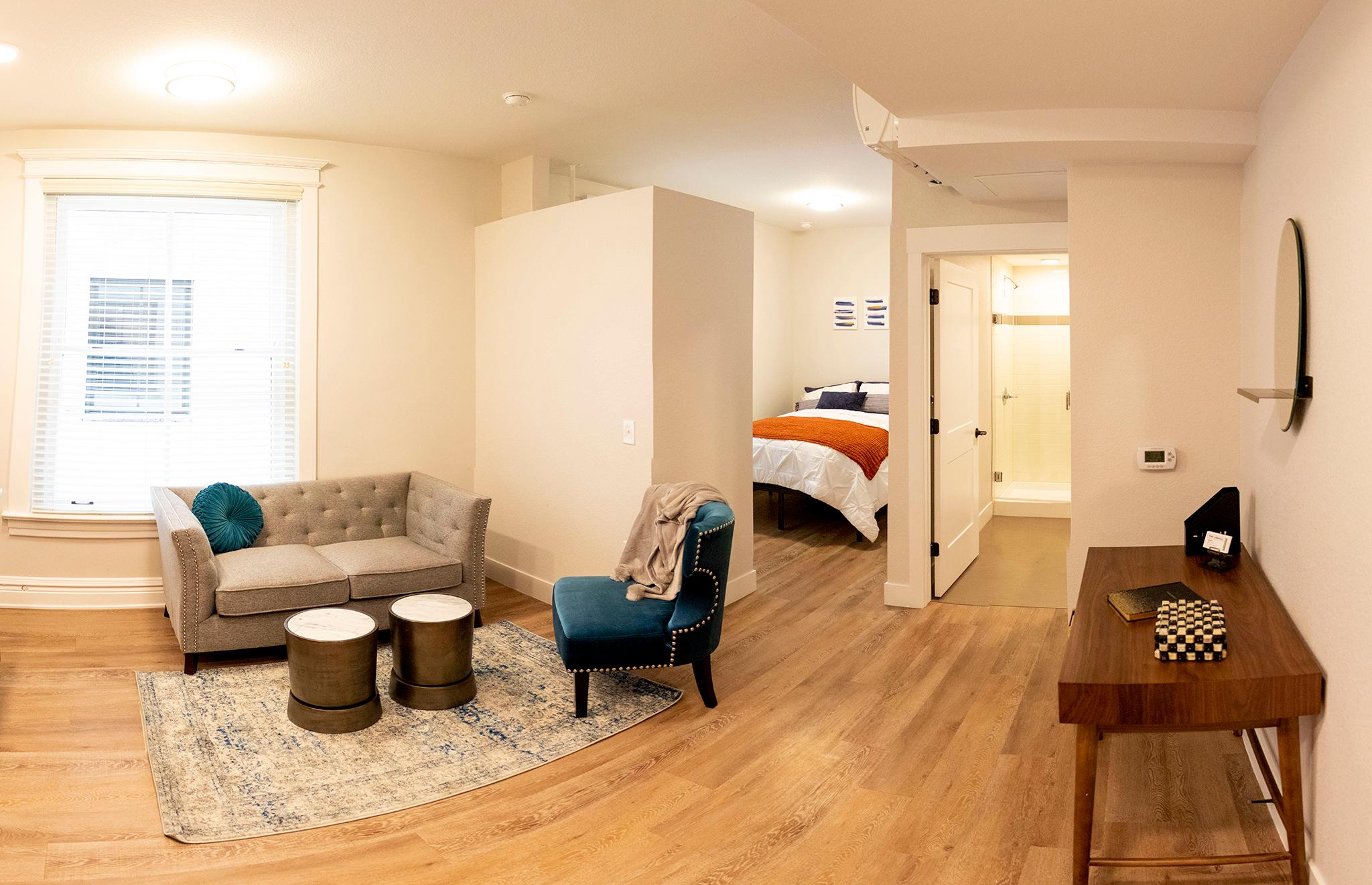
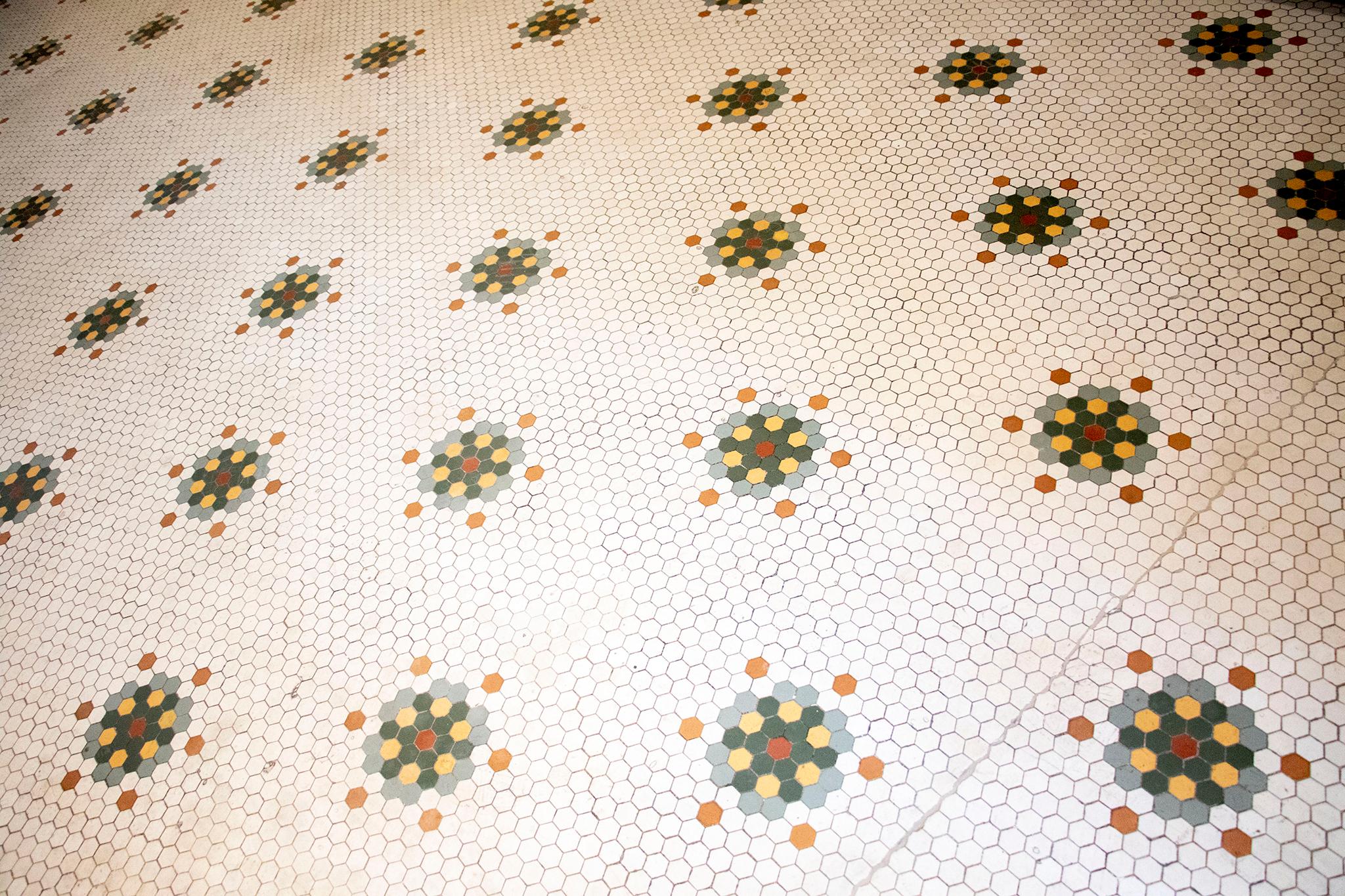
Denver's NINE dot ARTS, a company of curators and consultants who connect businesses to the arts, lined up area artists for The Quayle.
Supporting local artists "is as important as what the art expresses," Zucker said.
A bright painting called "Foursquare" that's in The Quayle's laundry room along with Moya's mural evokes a game artist Sierra Montoya Barela played growing up in the Denver suburb of Lone Tree. Denver-born Barela studied at the Rhode Island School of Design. She said that after graduation she thought she would have to stay on the East Coast to have a career. But she came to see her hometown as a place where businesses and museums supported local artists.
"I very quickly saw how special Denver was," Barela said.
Barela recently moved east again, to take a job in Philadelphia. The Denver Art Museum still considers her local. Barela will be giving demonstrations at the museum Dec. 28-29 and Jan. 4-5. Barela said she is looking forward to seeing her work at The Quayle while visiting her hometown.
Corrects that Charles Quayle designed the First Avenue Hotel.
